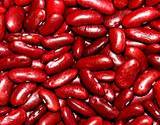|
Grandma's Amino Acids Guide
The commonly known amino acids are combined in various ways to create the hundreds of different types of proteins present in all living things. In the human body, the human liver produces about 80 percent of the amino acids needed. The remaining 20 percent must be obtained from human nutrition. These are called the essential amino acids. The essential amino acids that must enter the body through diet are: The nonessential amino acids, which can be manufactured in the body from other amino acids obtained from dietary sources, include:
The fact that they are termed "nonessential" does not mean that they are not necessary, on the contrary, only that they need not be obtained through the diet because the body can manufacture them as needed. Even though Carnitine and Glutathione are not considered an amino acid in the strictest sense, because of the chemical structure similar to that of amino acids, it is usually considered together with them. Amino acids also enable vitamins and minerals to perform their jobs properly. Even if vitamins and minerals are absorbed and assimilated by the body, they cannot be effective unless the necessary amino acids are present. For example, low levels of the amino acid tyrosine my lead to iron deficiency . Deficiency and/or impaired metabolism of the amino acids methionine and taurine has been linked to allergies and autoimmune disorders. Proteins are a necessary part of every living cell in the body. Next to water, protein makes up the greatest portion of our body weight. In the human body, protein substances make up muscle, ligaments, tendons, organs, glands, nails, hair, and many vital body fluids, and are essential for the growth of bones.
Breaking Down Amino Acids
|
Benefits of Amino Acids and
Understanding Supplements
It's possible to take supplements containing amino acids, both essential and nonessential. For certain disorders, taking supplements of specific amino acids can be very beneficial. When you take a specific amino acids or amino acid combination, it supports the metabolic pathway involved in your particular illness.
Vegetarians, especially vegans, would be wise to take a formula containing all the essential amino acids to ensure that their protein requirements are met.
Supplemental amino acids can be purchased as capsules, tablets, liquids, and powders. Most supplements are derived from animal protein, yeast protein, or vegetable protein. Crystalline free-form amino acids are generally extracted from a variety of grain products. Brown rice bran is a prime source, although cold-pressed yeast and milk proteins are also used.
When choosing amino acid supplements, look for products that contain USP (U.S. Pharmacopoeia) pharmaceutical-grade L-crystalline amino acids. Most of the amino acids (except for glycine) can appear in two forms, the chemical structure of one being mirror image of the other. These are called the D- and L- forms-for example, D-cystine and L-cysteine. The "D" stand for dextro (Latin for "right) and the "L" for levo ) Latin for left"); these terms denote the direction of the rotation of the spiral that is the chemical structure of the molecule.
Proteins in animal and plant tissue are made from the L- forms of amino acids (with the exception of phenylalanine, which is also used in the forms of DL-phenylalnine, a mixture of D- and L- forms). Thus, with the respect to supplements of amino acids, products contains the L- forms of amino acids are considered to be more compatible with human biochemistry.
Free-form means the amino acid is in its purest form. Free-form amino acids need no digestion and are absorbed directly into the bloodstream. These white crystalline amino acids are stable at room temperature and decompose when heated to temperature of 350-660 degrees. They are rapidly absorbed and do not come from potentially allergenic food sources. For best results, choose encapsulated powders or powder.
Each amino acid has specific functions in the body. When taking amino acids individually for healing purposes, take them on an empty stomach to avoid making them compete for absorption with the amino acids, it is best to take them in the morning or between meals, with small amounts of Vitamin B6 and Vitamin C to enhance absorption.
When taking an amino acid complex that includes all of the essential amino acids, it is best to take it one-half hour away from a meal, either before or after. If you are taking individual amino acids, it is wise also to take a full amino acid complex, including both essential and nonessential amino acids, at a different time. This is the best way to assure you have adequate amounts of all the necessary amino acids.
Individual amino acids should not be taken for long periods of time. A good rule to follow is to alternate the individual amino acids that fit your needs and back them up with an amino acid complex, taking the supplements for two months and then discontinuing them for two months.
Researchers warn against taking large doses of amino acids for extended periods of time. Moderation is the key. Some amino acids have potentially toxic effects when taken in high doses (over 6,000 milligrams per day) and may cause neurological damage. These include aspartic acid , glutamic acid, homocysteine, serine, and tryptophan . Cysteine can be toxic if taken in amounts over 1,000 milligrams per day.
Do not give supplemental amino acids to a child or take doses of any amino acid to excess of the amount recommended unless specifically direted to do so by your health care provider.
DISCLAIMER:
The statements made here have not been approved by the Food and Drug Administration. These statements are not intended to diagnose, treat or cure or prevent any disease. This notice is required by the Federal Food, Drug and Cosmetic Act.
Return from Amino Acids to The Human Digestive System
Return to Grandma's Herbal Remedies Guide








